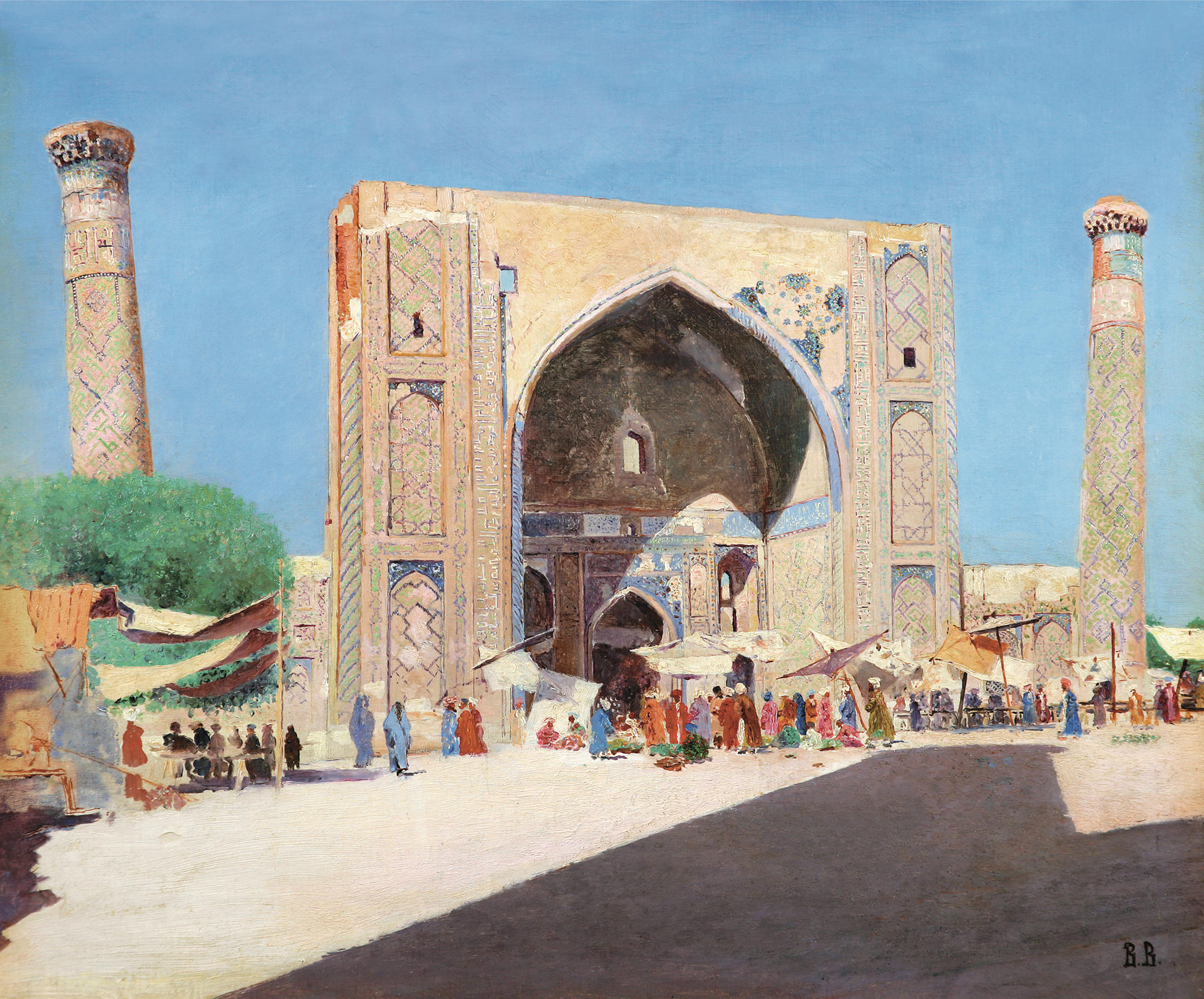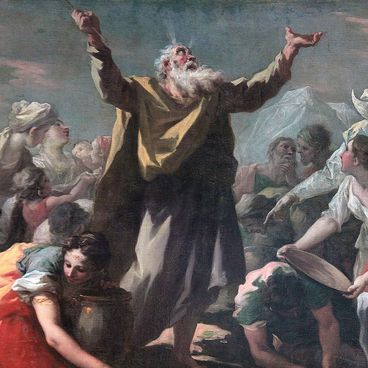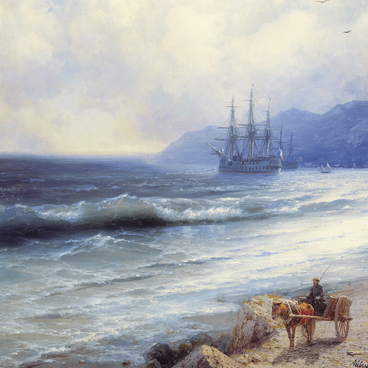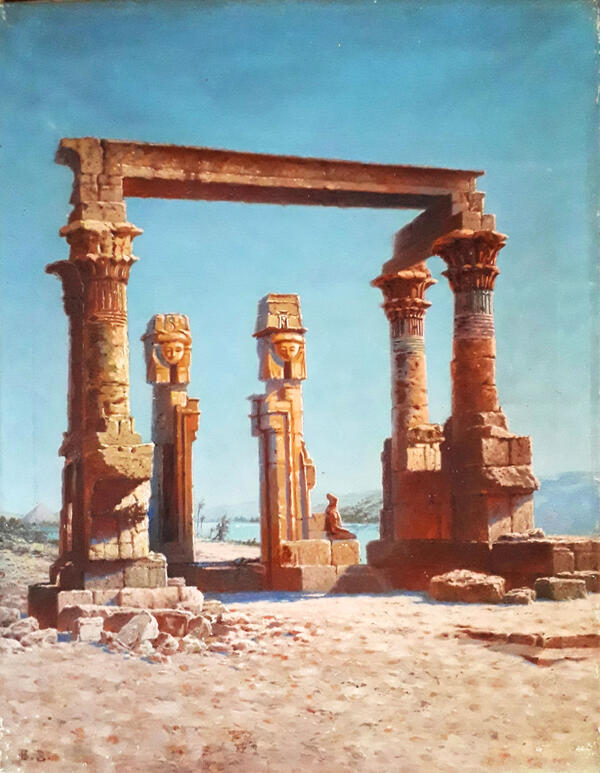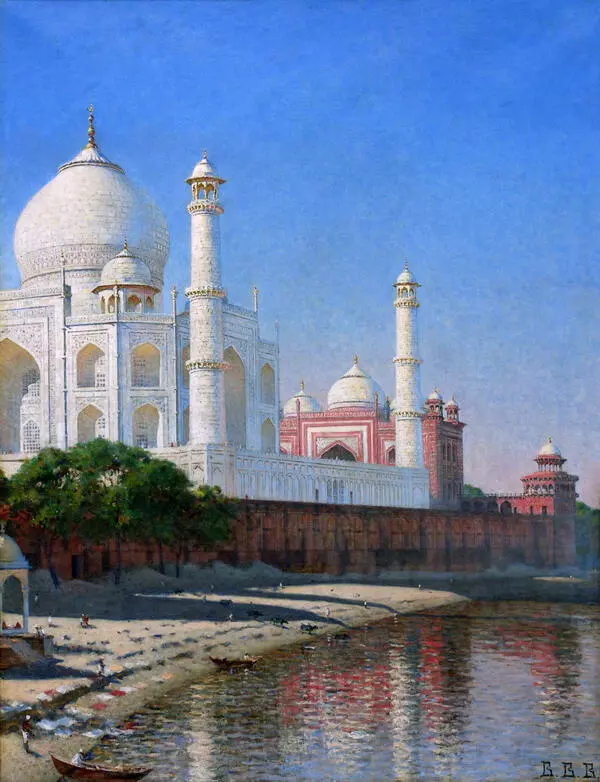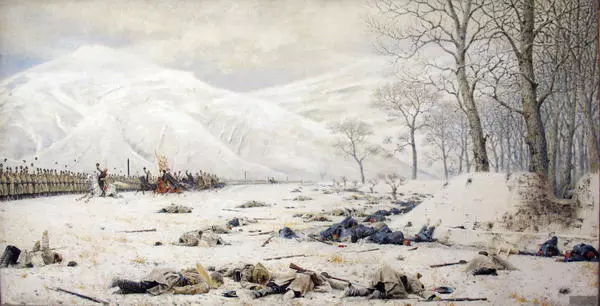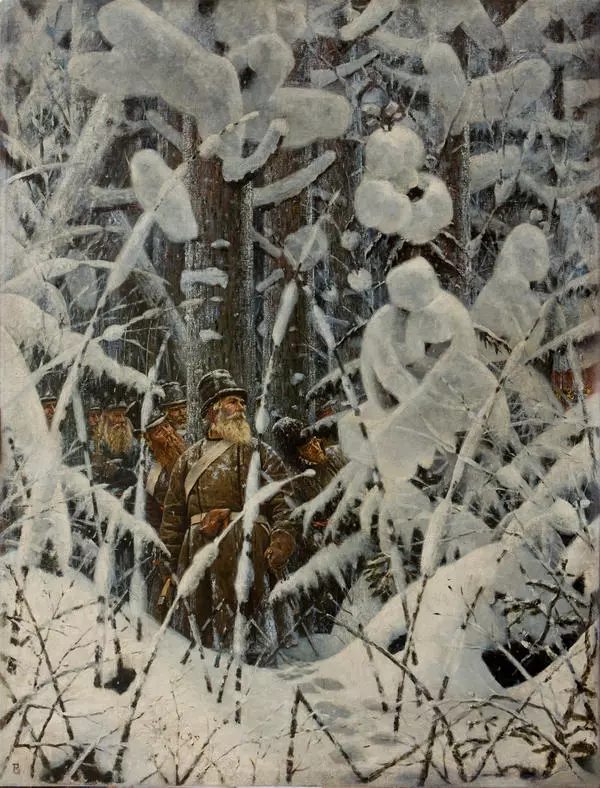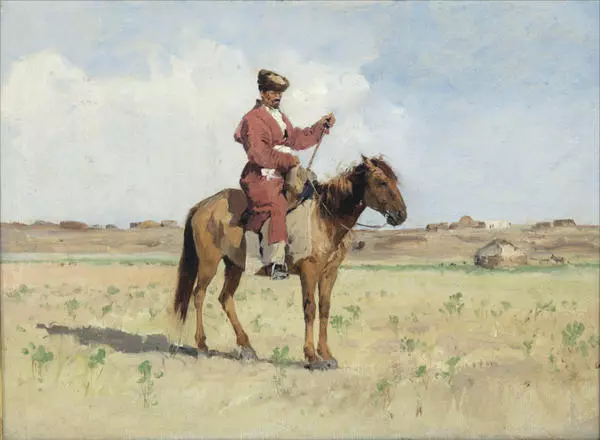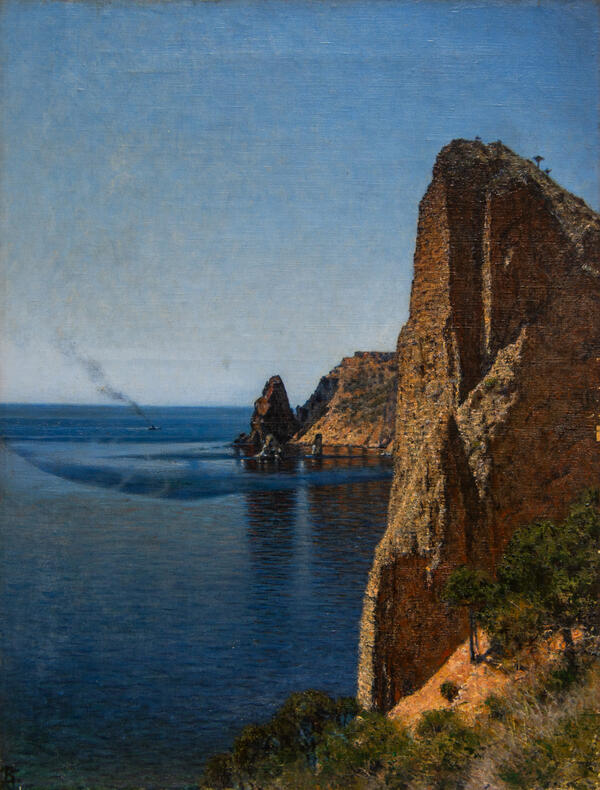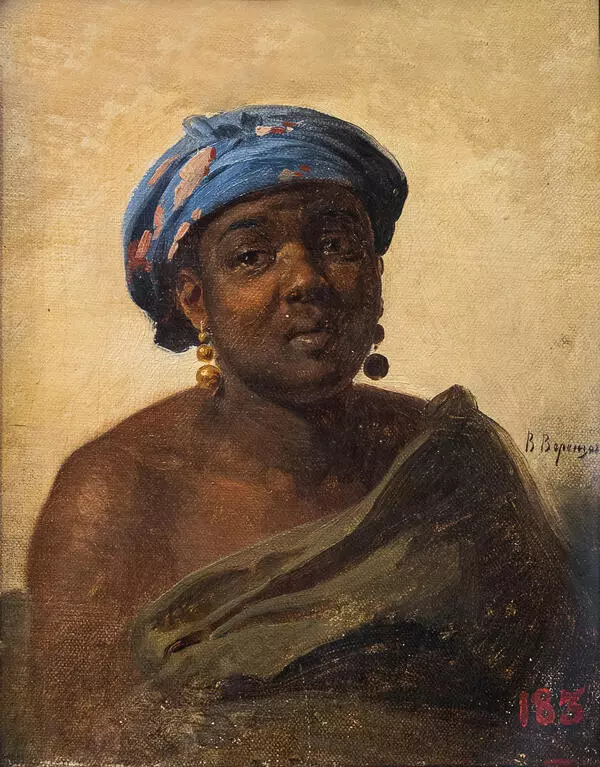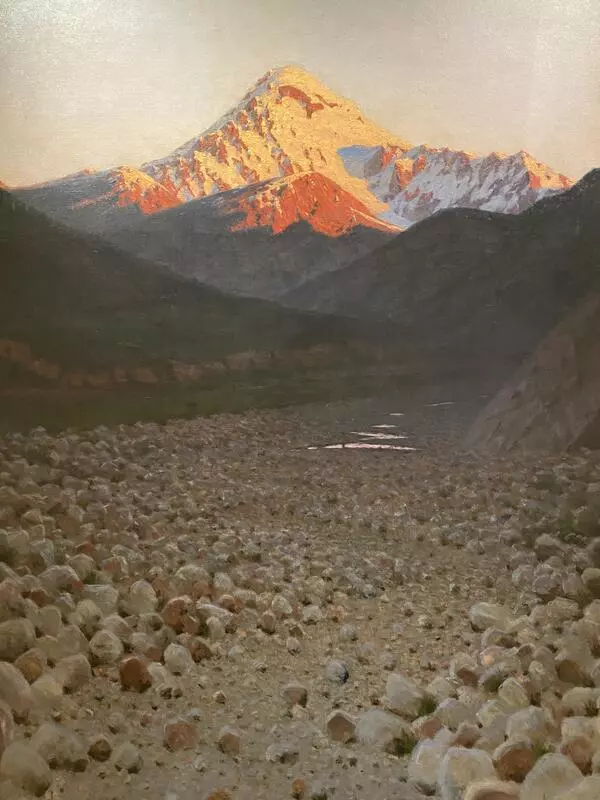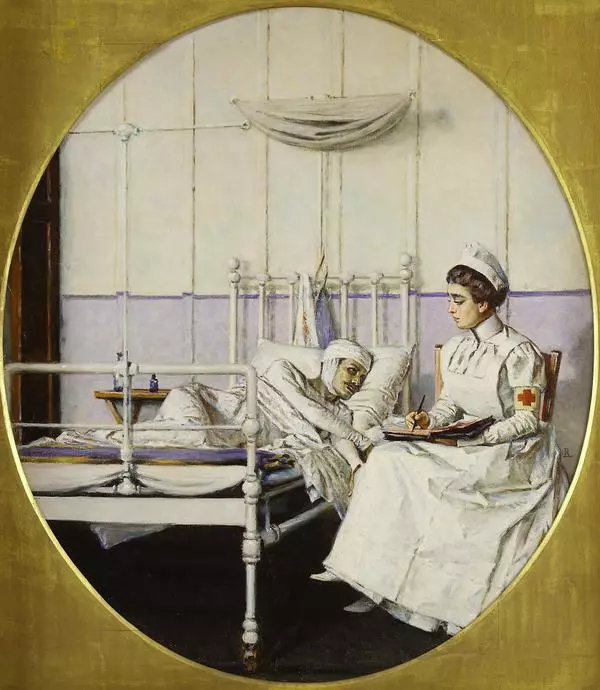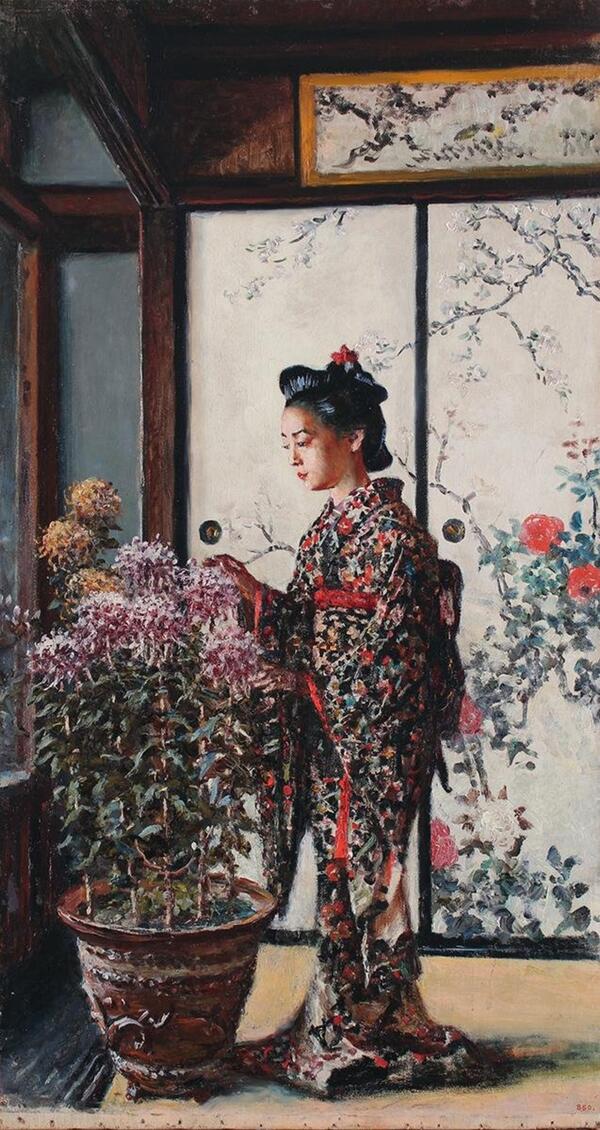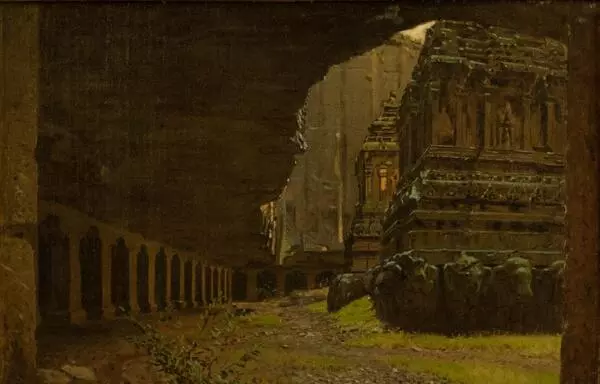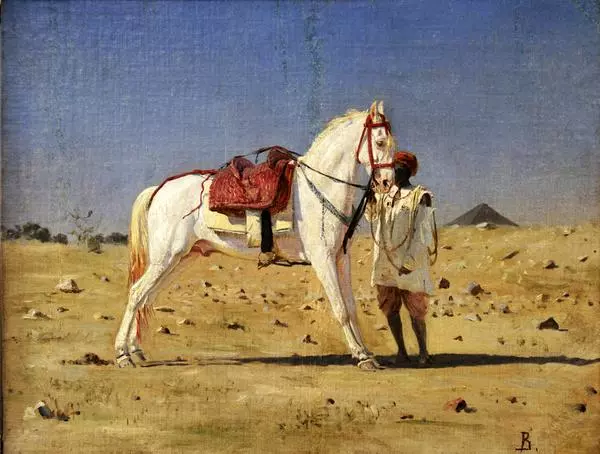Vasily Vereshchagin is a Russian battle painter and writer. As he himself pointed out, he owed his artistic development to indefatigable lifelong travelling through the East, Central Asia, India, Palestine, Indonesia, and Japan.
In the late 60s of the 19th century, Konstantin Kaufman, the Governor-General of Turkestan and commander of Russian troops in Central Asia, invited Vereshchagin to work as his full-time artist. The 25-year-old painter agreed, and went first to Tashkent, then to Samarkand.
At that time, the Russian Empire fought with the Emirate of Bukhara and two neighboring khanates - Khiva and Kokand. When Kaufman occupied Samarkand and marched straight on, leaving there only a small garrison, the local residents rebelled.
Vereshchagin, staying in Samarkand at that time, actively participated in the defense and counterattack during the besiegers’ breakthrough, and was subsequently awarded the Order of St. George of the 4th class.
He presented his works brought from Central Asia in 1869 at an exhibition in the capital. In the same year, the artist went to Turkestan again, through Siberia this time.
Picturesque culture of the presented painting, coloristic harmony, organic richness of tone transitions and sharp contrasts of light and shadow indicate that Vereshchagin created it precisely during his second stay in Samarkand.
The painting depicts the famous Registan Square in front of Ulugbek Madrasah. Registan has been a downtown and main market square since ancient times. Ulugbek Madrasah was a higher educational institution built in around 1417 by Ulugbek, an astronomer and the ruler of Timurid state. The primary purpose of the institute was to study Islamic theology and law, but it became an outstanding educational and scientific center of Central Asia in the 15th century.
Vereshchagin’s work illustrates everyday life of the city. A small market is shown in the rays of hot sun. Goods are placed just on the carpets usually under awnings, a few buyers walk among them. The market gives the impression of a quiet and provincial place, and the madrasah in the background bears marks of desolation and slow destruction.
The painting is part of the artist’s Turkestan Series. After participating in Samarkand fortress defense, Vereshchagin got interested in finding a new technique of writing and transmitting special colorful atmosphere of oriental life with a brush. The cycle of impressions of his stay in Central Asia eventually included 13 paintings, 81 studies and 133 drawings.
In the late 60s of the 19th century, Konstantin Kaufman, the Governor-General of Turkestan and commander of Russian troops in Central Asia, invited Vereshchagin to work as his full-time artist. The 25-year-old painter agreed, and went first to Tashkent, then to Samarkand.
At that time, the Russian Empire fought with the Emirate of Bukhara and two neighboring khanates - Khiva and Kokand. When Kaufman occupied Samarkand and marched straight on, leaving there only a small garrison, the local residents rebelled.
Vereshchagin, staying in Samarkand at that time, actively participated in the defense and counterattack during the besiegers’ breakthrough, and was subsequently awarded the Order of St. George of the 4th class.
He presented his works brought from Central Asia in 1869 at an exhibition in the capital. In the same year, the artist went to Turkestan again, through Siberia this time.
Picturesque culture of the presented painting, coloristic harmony, organic richness of tone transitions and sharp contrasts of light and shadow indicate that Vereshchagin created it precisely during his second stay in Samarkand.
The painting depicts the famous Registan Square in front of Ulugbek Madrasah. Registan has been a downtown and main market square since ancient times. Ulugbek Madrasah was a higher educational institution built in around 1417 by Ulugbek, an astronomer and the ruler of Timurid state. The primary purpose of the institute was to study Islamic theology and law, but it became an outstanding educational and scientific center of Central Asia in the 15th century.
Vereshchagin’s work illustrates everyday life of the city. A small market is shown in the rays of hot sun. Goods are placed just on the carpets usually under awnings, a few buyers walk among them. The market gives the impression of a quiet and provincial place, and the madrasah in the background bears marks of desolation and slow destruction.
The painting is part of the artist’s Turkestan Series. After participating in Samarkand fortress defense, Vereshchagin got interested in finding a new technique of writing and transmitting special colorful atmosphere of oriental life with a brush. The cycle of impressions of his stay in Central Asia eventually included 13 paintings, 81 studies and 133 drawings.
